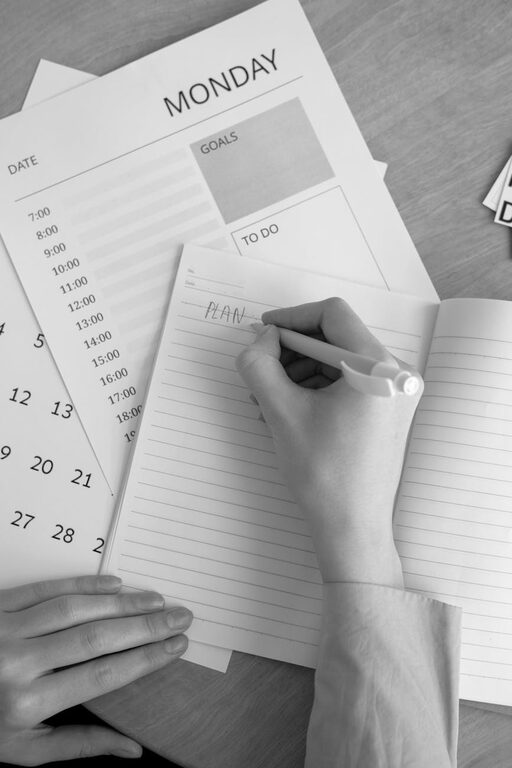Bullet journaling is a flexible and creative way to organize your life, track habits, set goals, and keep your thoughts in one place. Whether you’re new to journaling or looking for a system to boost your productivity, bullet journaling offers a customizable approach that fits your style. In this beginner guide, we’ll walk you through the basics and help you start your own bullet journal.
What Is Bullet Journaling?
Bullet journaling, often called “BuJo,” was developed by Ryder Carroll as an analog system to organize tasks, events, and notes using simple symbols. It combines elements of a planner, diary, to-do list, and sketchbook, allowing you to keep track of everything on your terms.
The beauty of bullet journaling lies in its flexibility: you can make it as simple or as artistic as you want. The main goal is to help you stay organized and mindful of your priorities.
What You’ll Need to Get Started
You don’t need much to begin bullet journaling. Here are some basic supplies:
– Notebook: Many use dotted notebooks for easy guidelines, but lined or blank works too.
– Pen: Choose something comfortable to write with. A fine liner or gel pen is popular.
– Ruler: Optional but helps create clean lines.
– Colored pens or markers: For adding color and decoration (optional).
Once you have your tools, you’re ready to create your first spreads!
Core Components of a Bullet Journal
1. Index
The index is a table of contents for your journal. It helps you quickly find pages by logging page numbers and topics. Leave the first two pages blank for your index and update it as you add new entries.
2. Future Log
This is a section to note upcoming events, appointments, or long-term goals for the next few months. Divide a page into sections for each month and jot down important dates or tasks.
3. Monthly Log
At the start of each month, create a calendar-like overview where you list the days and write down events or deadlines. Next to it, have a task list for things you want to accomplish during the month.
4. Daily Log
Daily logs are where day-to-day to-dos, events, and thoughts go. Each day can have a list of tasks, notes, and quick reflections. These are usually created as you go.
Using Bullet Journal Symbols (Bullets)
A key feature is using simple symbols to categorize entries. Here are the most common:
– Task: • (a bullet)
– Completed task: X
– Migrated task: > (task moved to another day)
– Event: ○
– Note: – (a dash)
These symbols keep your journal neat and help you quickly recognize the status and type of each entry.
Step-by-Step to Create Your First Spread
- **Set up your index on the first two pages.** Number these pages.
- **Create a future log on the next pages.** Divide into months and note key dates.
- **Make your monthly log.** Draw a calendar or list days vertically. Add monthly goals beside it.
- **Start your daily logs.** Write the date and list your tasks, events, and notes using bullet symbols.
- **Update your index.** Write the page numbers and names of your logs as you add them.
Tips for Bullet Journaling Success
– Keep it simple at first. Don’t worry about making everything pretty; focus on function.
– Experiment with layouts. Try different monthly and weekly spreads to find what works for you.
– Use collections. These are themed lists or pages, such as books to read, habit trackers, or meal plans.
– Review regularly. At the end of the day or week, mark completed tasks and migrate unfinished ones.
– Personalize your journal. Add doodles, stickers, or colors when you feel inspired.
Popular Collections to Try
– Habit tracker: Track daily habits like water intake, exercise, or reading.
– Gratitude log: Write something you’re grateful for each day.
– Mood tracker: Identify your mood patterns with colors or icons.
– Goal tracker: Break goals into steps and track progress.
– Brain dump: Use a page to jot down all your random thoughts or ideas.
Benefits of Bullet Journaling
– Improved productivity: Helps you focus on important tasks and deadlines.
– Better organization: Combines planning, notes, and lists in one place.
– Creative outlet: Allows you to express yourself and unwind through drawing.
– Mindfulness: Encourages reflection and intentional living.
– Flexibility: Adaptable to any lifestyle or personality.
Final Thoughts
Starting a bullet journal doesn’t have to be overwhelming. With just a notebook and pen, you can create a personalized tool that helps you stay organized and inspired. Remember, it’s your journal—there are no strict rules. Start simple, be consistent, and over time, your bullet journal will become an invaluable part of your daily routine.
Happy journaling!

